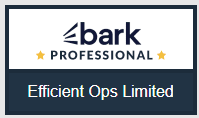Top Budgeting and Forecasting Tips for Financial Agility
In the constantly evolving financial landscape, budgeting at any time of year is essential for maintaining financial health and planning for the future. However, before the start of the new year is the perfect opportunity to create a budget. A strong budget not only supports internal planning and decision-making but also plays a crucial role in funding, as it demonstrates to investors and lenders that your business can manage resources effectively and achieve sustainable growth.
Think of a budget as your financial compass; it provides direction for everyday decisions and long-term strategy. When used effectively, it becomes a practical tool that delivers measurable benefits:
Increases Visibility: allows you to make more informed decisions on strategy, growth and resource allocation while also providing investors with a clear picture of your financial strategy.
Understanding Costs: Budgeting helps to see what costs across multiple areas are being incurred by the business and where savings can occur.
Tracking Progress: after the Budget is created, comparing actual performance vs budget not only highlights areas for improvement but also builds confidence with stakeholders and funders.
However, in a rapidly changing business environment, static budgets can quickly become obsolete. Therefore, integrating reforecasting into your budgeting process is vital. Reforecasting is essentially updating your Budget based on the new information you have available throughout the year. Regular reforecasting helps to ensure your budget remains relevant and adaptable, which is particularly important if you are reporting to investors or seeking new funding, as it demonstrates that your business is proactive, resilient, and capable of adjusting strategy in response to market shifts.
Here are some tips for Budgeting for your business at any point in the year, along with strategies for incorporating reforecasting between cycles:
Assess Current Financial Situation: Start by evaluating your current financial standing. Review your revenue streams, recurring and non-recurring expenses, cash flow, and any outstanding debts or obligations. This will provide a baseline for your budgeting efforts.
Set Clear Goals: Define your business goals and objectives for the upcoming period. Whether it's increasing revenue, expanding operations, or reducing expenses, having clear goals will guide your Budgeting decisions.
Review Past Performance: Look back at your financial performance over the past months or years. Analyse trends, prepare a run rate analysis, ensure your vendor database is up to date, identify areas of strength and weakness, and learn from past successes and failures.
Update Revenue and Expense Projections: Based on your assessment of past performance and your current goals, update your revenue and expense projections for the budgeted period. Consider any changes in market conditions, customer demand, or business strategy that may impact your finances.
Prioritise Spending: Allocate funds to essential expenses first, such as rent, utilities, payroll, and inventory. Then, allocate funds to discretionary expenses based on their importance to your business goals.
Consider Seasonal Variations: If your business experiences seasonal fluctuations in revenue or expenses, take these variations into account when budgeting. Anticipate higher or lower costs during peak seasons and adjust your budget accordingly.
Build in Contingencies: Plan for unexpected expenses or emergencies by setting aside funds for contingencies. Having a buffer can help you navigate unforeseen challenges without derailing your budget. A good rule of thumb is to set aside 5-10% of your overall budget for contingencies.
Communicate with Stakeholders: Keep key stakeholders informed about the budgeting process and ensure that everyone understands their roles and responsibilities in adhering to the budget. Transparency and accountability are essential for budget success.
Monitor and Reforecast: Continuously monitor your financial performance and compare actual results to budgeted amounts. Adjust your budget as needed by incorporating a reforecast either monthly, quarterly or semi-annually. Utilise real-time data to adjust your forecasts based on changes in the business environment, market conditions, or internal factors. This proactive approach ensures that your financial plan remains relevant in a dynamic business environment.
Analyse Variances: During each reforecasting cycle, conduct variance analysis to compare actual performance against your original budget, previous forecasts and run rates. Understanding the reasons behind these discrepancies will help refine your forecasting process and improve accuracy in future cycles.
Budgeting is a crucial skill for any business, and it’s a key component of success. By seamlessly integrating reforecasting into your financial management practices, you can maintain the agility and responsiveness necessary to thrive in a dynamic environment. By implementing these top budgeting tips and committing to regular reforecasting, your business will be exceptionally well-positioned to tackle challenges, capitalise on opportunities, and achieve its financial goals. Just as importantly, a well-structured budget reinforces internal decision-making while also building trust with investors and funding partners by showcasing financial discipline and adaptability.
Remember, a well-planned budget, reinforced by ongoing adjustments, is a powerful tool that not only drives internal success but also strengthens your external credibility. Embrace it with confidence!
Why go alone if you're unsure about creating or managing your business budget and forecasting process? Contact us at Efficient Ops, and we can provide you with guidance and our expertise to help you develop a budget or forecast that aligns with your business goals and financial needs.





